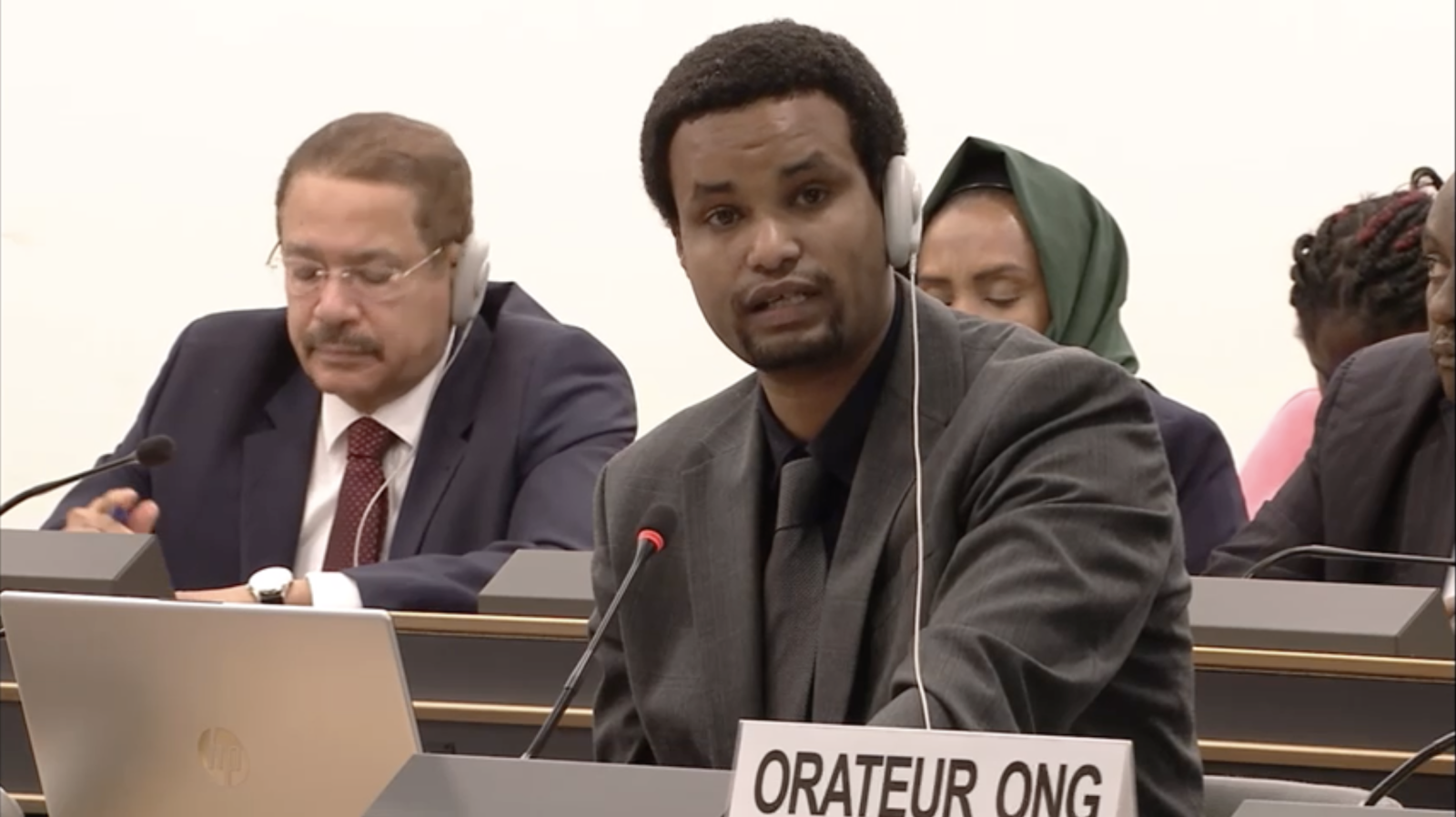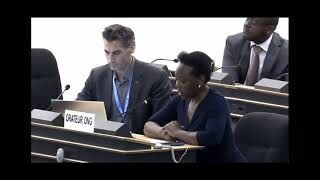
Advancing SDG 17 despite US Tariffs: the impact of Trump’s trade policies on Sustainable Development Goals
By Astrid Bochnakian / GICJ
Introduction
The last of the UN Sustainable Development Goals (SDGs), SDG 17 emphasises the importance of global cooperation and partnership to achieve the other goals. Titled “Partnerships for the Goals”, it particularly highlights the need for financing, technology transfer, policy coordination, and solidarity between countries, sectors, and communities to implement the other UN-backed objectives towards sustainable development. This multifactorial goal, based on capacity development, financial inclusion and investment, and trade, is hence deeply intertwined with all other goals.
The 17 SDGs are a set of objectives adopted in 2015 as part of the 2030 Agenda for Sustainable Development. They provide a comprehensive framework that guides national and international policies in addressing the most pressing global challenges, including poverty, inequalities, climate change, environmental degradation, peace, and justice. All of the goals are interconnected and intertwined, with the set designed to be achieved by 2030.
Yet, in the context of rising economic nationalism displayed by the United States' tariffs imposed on nearly every country in the world, this Goal is threatened, hence putting at risk all of the other SDGs. As developing countries are key producers of manufactured goods, with long supply chains which connect countries to each other, the lack of stable and fair trade conditions further slows their development.
Background: SDG 17 and Global Trade Cooperation
SDG 17, the last of the SDGs, focuses on strengthening global partnerships for sustainable development through trade, finance, technology, and systemic coherence. It is broken down into 19 targets, which are as follows:
- Tax and other revenue collection
- ODA commitment by developed countries
- Additional financial resources for development
- Debt sustainability
- Investment promotion for Least Developed Countries (LDCs)
- Access to technology
- Transfer of technologies
- Use of the Internet
- Capacity-building for SDGs
- Multilateral Trading System (WTO)
- Exports of developing countries
- Duty-free market access for LDCs
- Global macroeconomic stability
- Policy coherence for sustainable development
- Respect the country’s policy space
- Global partnership for sustainable development
- Partnerships (public, private, Civil society organisations)
- National statistics availability
- Statistical capacity
According to the 2025 Sustainable Development Goals Report [1], target 17.11 in particular is off track for 2030. While it can be a meaningful driver for sustainable development, LDCs only represented 1.1% of global merchandise exports in 2023, while Europe and North America represented 48,3%. These figures reveal that global trade remains deeply asymmetrical, favouring industrialised economies and leaving LDCs structurally marginalised. As long as trade barriers and protectionist measures persist, target 17.11 will remain constrained by unequal power relations rather than grounded in mutual benefit.
Trump’s Tariffs
Since his second inauguration, on 20 January 2025, US President Donald Trump has renewed his protectionist agenda, threatening the global economy with the imposition of sweeping tariffs. On 2 April 2025, he invoked the 1977 International Emergency Economic Powers Act to impose so-called “reciprocal” and sectoral tariffs through an Executive Order. According to a UN Trade and Development (UNCTAD) database, countries are taxed from 10% to 41%, and sectors such as iron or steel, aluminium, and their respective derivatives, are taxed up to 50% [2].
Although these measures include limited exceptions for the United States’ major trading partners and strategic imports, they have disproportionately affected developing economies, whose exports are often concentrated in a few low-value-added sectors, further limiting their
share of global merchandise exports. For many LDCs, such tariffs have curtailed access to US markets, disrupted supply chains, and increased production costs through cascading trade effects. In practice, they exemplify how the resurgence of economic nationalism in the world’s largest economy can reverberate through global value chains, amplifying inequalities and slowing sustainable development across the Global South.
For instance, the 15% tariff, which was imposed on Lesotho in August 2025 (originally announced to be 50%), has deeply impacted the country’s textile sector. Associated Press reported in August 2025 that the sector was facing massive factory closures, threatening over 30,000 workers in a country where about 2.3 million people still live below the poverty line. Companies which produce clothing for American retailers have warned that such tariffs create unfair competition with countries facing feeder export taxes, thus threatening the country’s share of the global merchandise market. [3]

Tariff rates imposed by the US on Developing Countries and LDCs, date source: UN Trade and Development (UNCTAD), https://unctad.org/topic/trade-analysis/tariffs/tariff-dashboard
From impacting SDG 17 …
Additionally, by reducing market predictability and eroding trust in the multilateral trading system, these US policies not only undermine SDG 17, particularly targets 17.10 through 17.12. Beyond slowing economic growth, these policies weaken the collaborative partnerships and multilateral frameworks that the 2030 Agenda seeks to foster, as countries face increased uncertainty, retaliatory measures, and the fragmentation of cooperative trade networks. In effect, the tariffs illustrate how unilateral economic measures by a major global actor can disrupt the systemic interconnections essential for sustainable development.
… to impacting the interconnected SDGs
As those tariffs restrict global market access for developing countries, they deeply limit their capacity to produce revenue and, in fine, widely impact other SDGs. For instance, tariffs directly restrict access to decent work and economic growth (SDG 8), industry, innovation and infrastructure (SDG 9) and reduced inequalities (SDG 10). They can also indirectly impact access to affordable and clean energy (SDG 7) and to sustainable cities and communities (SDG 11), can limit the eradication of poverty (SDG 1) and hunger (SDG 2), the promotion of gender equality (SDG 5) and access to good health and well-being (SDG 3) and quality education (SDG 4).
Conclusion
The case of US tariffs demonstrates how unilateral trade policies can have far-reaching consequences beyond economic statistics, striking at the very foundation of international cooperation and impacting human rights and sustainable development. By weakening global trade partnerships and reducing opportunities for developing and least developed countries to integrate into the world economy, such measures threaten not only the achievement of SDG 17 but the entire framework of the 2030 Agenda for Sustainable Development. The erosion of trust in the multilateral trading system, coupled with increasing uncertainty in global markets, risks deepening inequalities and undermining the principle of shared responsibility that underpins sustainable development.
Reinforcing SDG 17 requires more than rhetorical commitment; it demands concrete actions to restore fair, predictable, and transparent trade relations. This includes re-engaging with multilateral institutions such as the WTO, supporting capacity-building for developing economies, and promoting open, rules-based trade that benefits all. In an era marked by protectionist tendencies, these steps are crucial to rebuilding confidence in international partnerships and to ensuring that globalisation becomes a vehicle for equity rather than exclusion.
Ultimately, advancing SDG 17, and more generally all SDGs, is both a political and moral imperative. Cooperation and solidarity, not competition and unilateralism, must remain the cornerstone of the international system if the world is to achieve the SDGs by 2030.
Geneva International Centre for Justice (GICJ) calls on all States to take all the necessary action to increase their efforts in implementing SDG 17, including renouncing to trade barriers and tariffs that disproportionately affect developing countries. We reiterate that meeting the targets of the 2030 Agenda for Sustainable Development is an imperative for the international community, as the SDGs not only seek to address issues faced by the current generation but also ensure a better future for the generations to come. Addressing disparities between countries and regions, especially between developing and developed countries, is key to ensuring that the SDGs can be effectively implemented globally.
References
[1] The Sustainable Development Goals Report 2025, https://unstats.un.org/sdgs/report/2025.pdf
[2] UNCTAD Tariff dashboard, https://unctad.org/topic/trade-analysis/tariffs/tariff-dashboard
[3] Associated Press, “Lesotho’s textile factories face closures despite US tariff cut”, https://apnews.com/article/lesotho-trump-tariffs-cuts-textile-factories







